BEST Mango Chutney
This post may contain affiliate links. See my disclosure policy.
A reader favorite for over 10 years, just read all the rave reviews! readers RAVE about this mango chutney recipe! Fresh, vibrant, and absolutely BURSTING with flavor, this Mango Chutney recipe makes a versatile and delicious condiment with a wide range of tasty applications. It keeps for a long time in the fridge, can be frozen, and I’ve included instructions for canning so it will keep for up to a year!
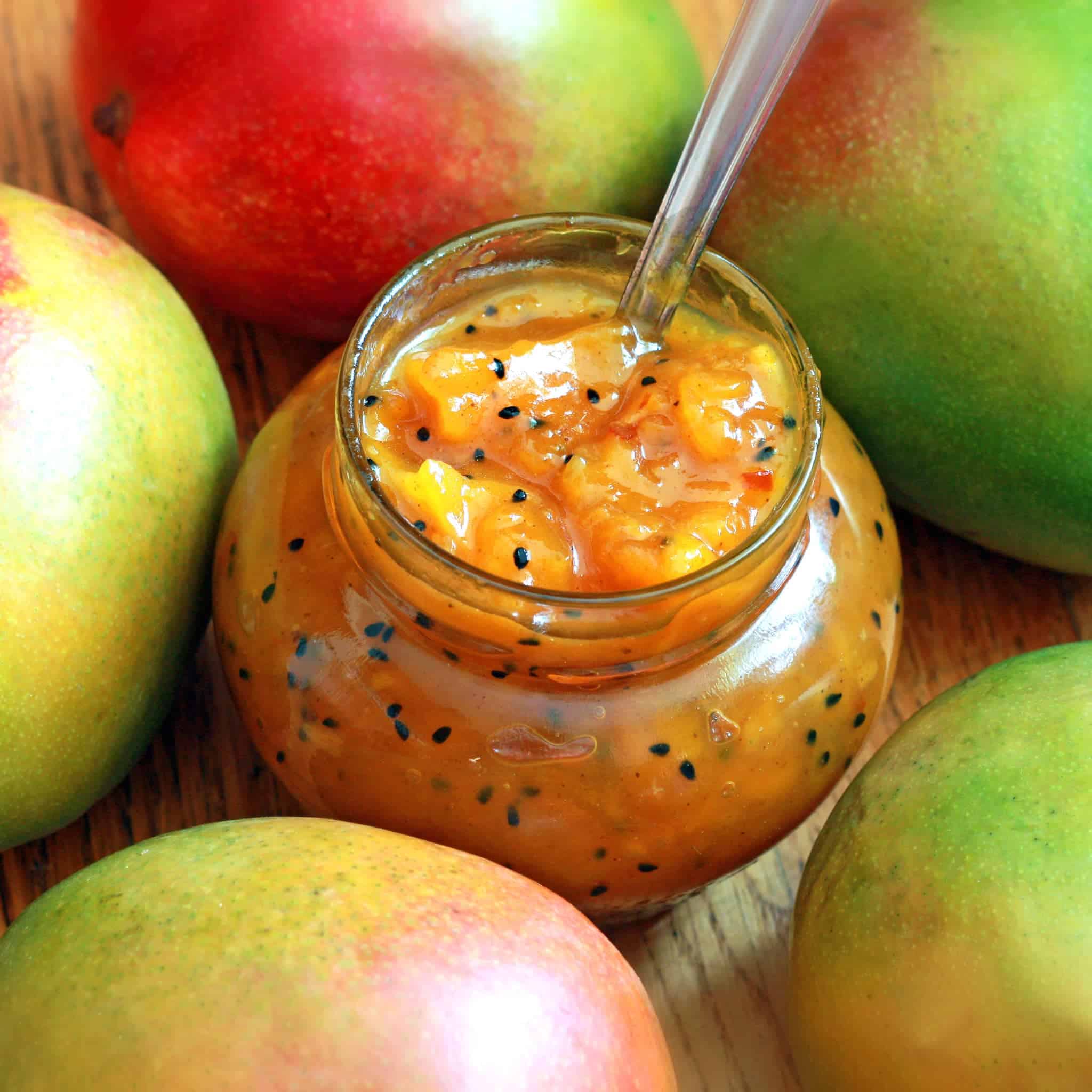
As a huge Indian food fan I love exploring and creating a wide range of chutneys out of fruits, nuts, vegetables and a whole host of spices. This mango chutney recipe is one of my favorites. Chutney dates back to 500 BC. Chutneys are endless in variety and ingredients, but they generally consist of fruit, vinegar, and sugar cooked down to a reduction. The word “chutney” is derived from the Sanskrit word caṭnī, meaning to lick. In other words, finger-lickin’ good!
Mango Chutney Ingredients
Fresh mango, sugar and vinegar is added and it is slowly cooked down to a sticky and delicious concoction. For flavor we’re also adding fresh ginger, garlic and red chilies along with spices that are first sauteed in oil to coax out maximum flavor: cumin, coriander, turmeric, cloves, cinnamon and cardamom. These ingredients all come together to create an unforgettable flavor profile.
What Are Nigella Seeds?
Another spice that is in this recipe is nigella, which comes from an annual flowering plant native to south and southwest Asia. Other names for it include black cumin, onion seed and kalonji. It’s hard to describe the flavor of nigella. Wikipedia describes them as “a combination of onions, black pepper and oregano, with a bitterness like mustard seeds.”
The flavor is really unlike anything you’ve tasted before. It’s fantastic! I love to use it at every possible opportunity when I make Indian or Middle Eastern foods. It’s wonderful in curries and it positively transforms breads and potatoes. Nigella is also commonly sprinkled on naan bread in India and is a wonderful spice to use in any “carb-based” dish. It adds an incredible flavor dimension to this mango chutney.
How to Use Mango Chutney
This mango chutney is sweet and spicy and is delicious either as a spread, a dip, or used in cooking a variety of Indian cuisine. Here are just a few ideas:
- As a Condiment: Serve it alongside grilled meats, such as chicken, pork, or lamb. It’s also delicious added to meat dishes like pulled pork and chicken (see my Pulled Chicken Mango Sandwiches).
- In Sandwiches and Wraps: Spread it on sandwiches or wraps for an extra layer of flavor. I also love to add it to these Grilled Cheese & Chutney Sandwiches.
- With Cheese and Crackers: It makes a great accompaniment to a cheese platter. Pair it with sharp cheeses like cheddar or creamy ones like brie.
- In Curries: Stir a spoonful of it into your curry dishes. This is one of my favorite ways to use it, it adds SO much flavor and a nice contrasting touch of sweetness!
- As a Marinade: Mix it with a little olive oil, lime juice, and spices, then coat chicken or pork before grilling or baking. It’s so yummy!
- With Rice or Grain Bowls: Top a bowl of rice or grains with mango chutney for a burst of flavor.
- In Salad Dressings: Incorporate it into a vinaigrette or dressing for a sweet and tangy twist on your salads.
- As a Glaze: Brush some mango chutney over roasted or grilled vegetables to add a glossy finish and sweet flavor. Use it to make my Mango Chutney Chicken.
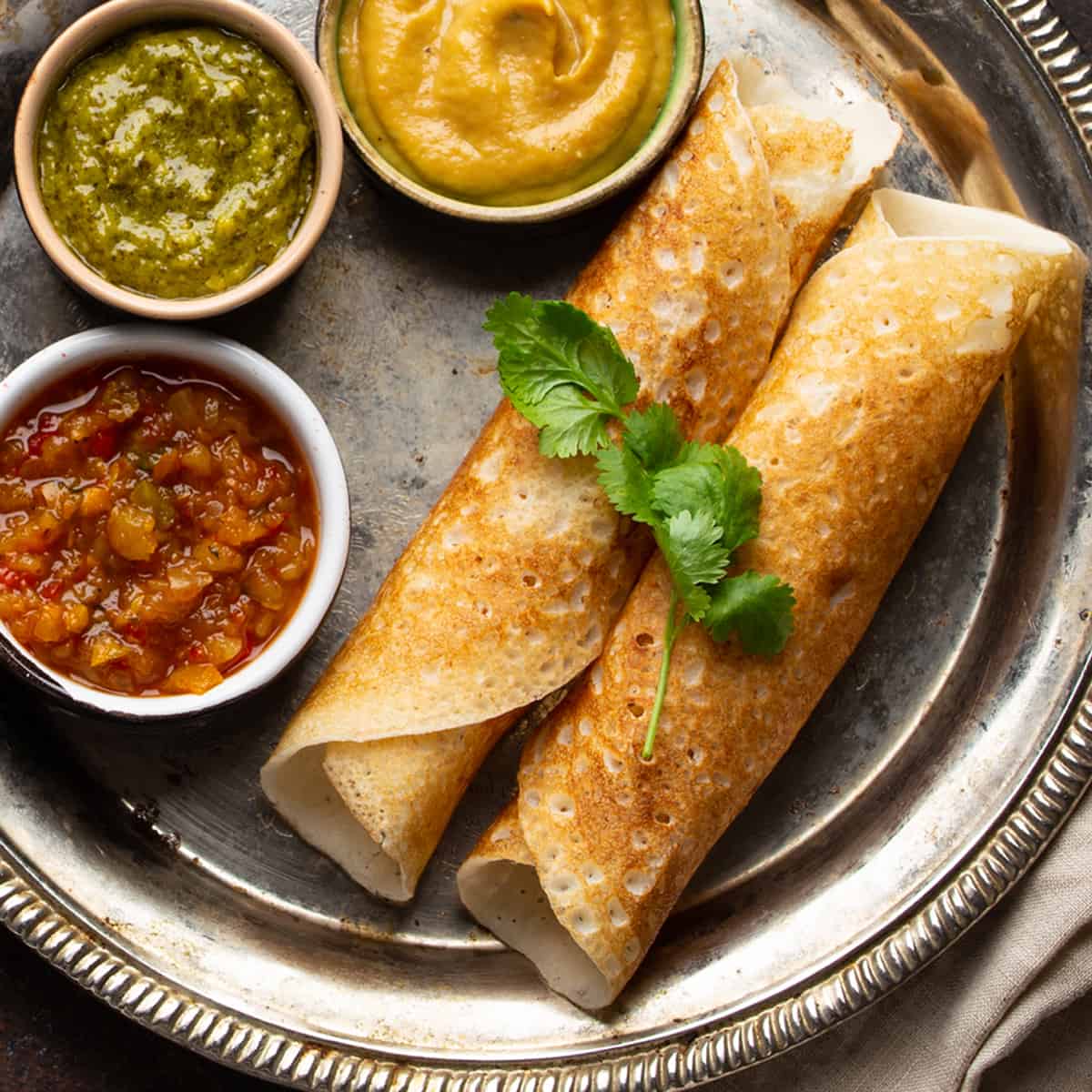
Mango Chutney Recipe
Let’s get started!
Over medium-high heat, heat some vegetable oil in a medium stock pot and saute the garlic, ginger and some diced red chilies for about a minute.
Add the spices and saute for another minute.
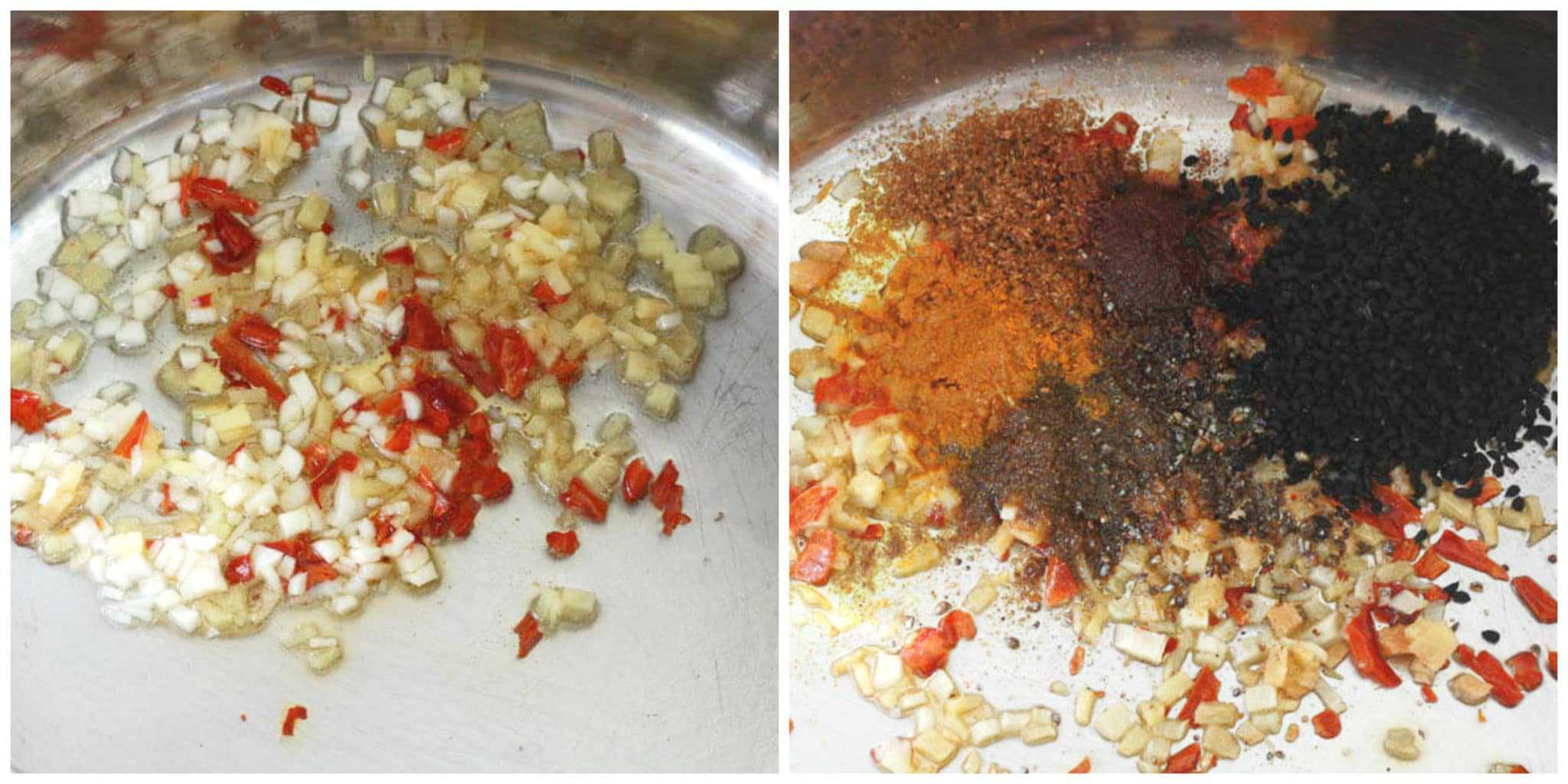
Add the chopped mangoes to the pot.
Add the sugar and salt. Add the white vinegar.
Stir up the mixture and bring to a boil. Reduce the heat to medium-low and continue on a steady simmer for one hour.
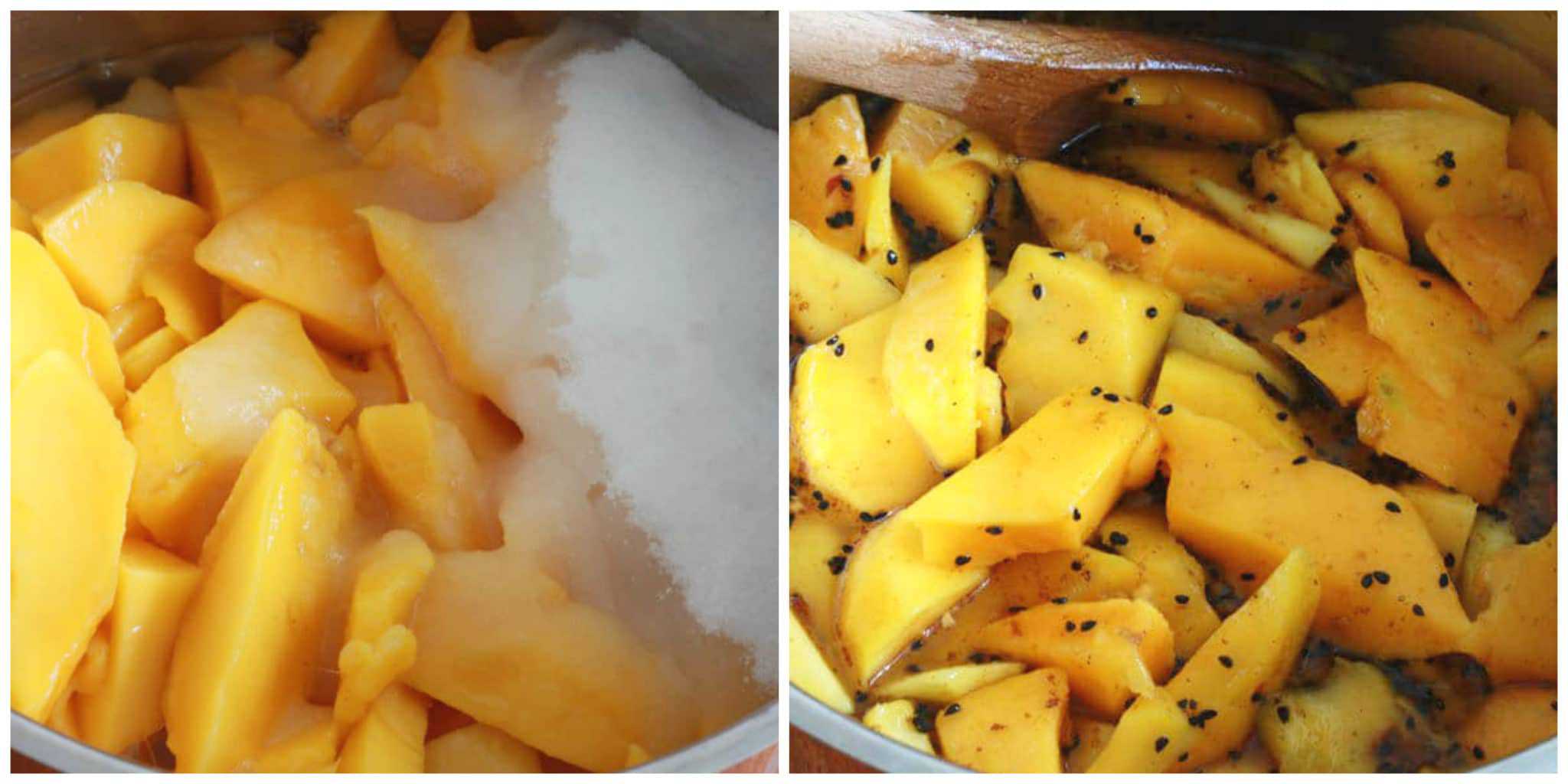
After an hour of simmering. Depending on how finely you diced the mango, you can either leave it as is, or you can use a potato masher or blender stick to mash up some of the larger pieces.
After a bit of mashing. Stored in jars in the fridge this chutney will last up to at least two months. You can also freeze it for several months. For long-term storage, can it in airtight jars: Pour the mixture directly into sterilized jars and process in a water bath for 10 minutes. Let sit undisturbed for 24 hours then store jars in a dark, cool place. Will keep for at least a year.
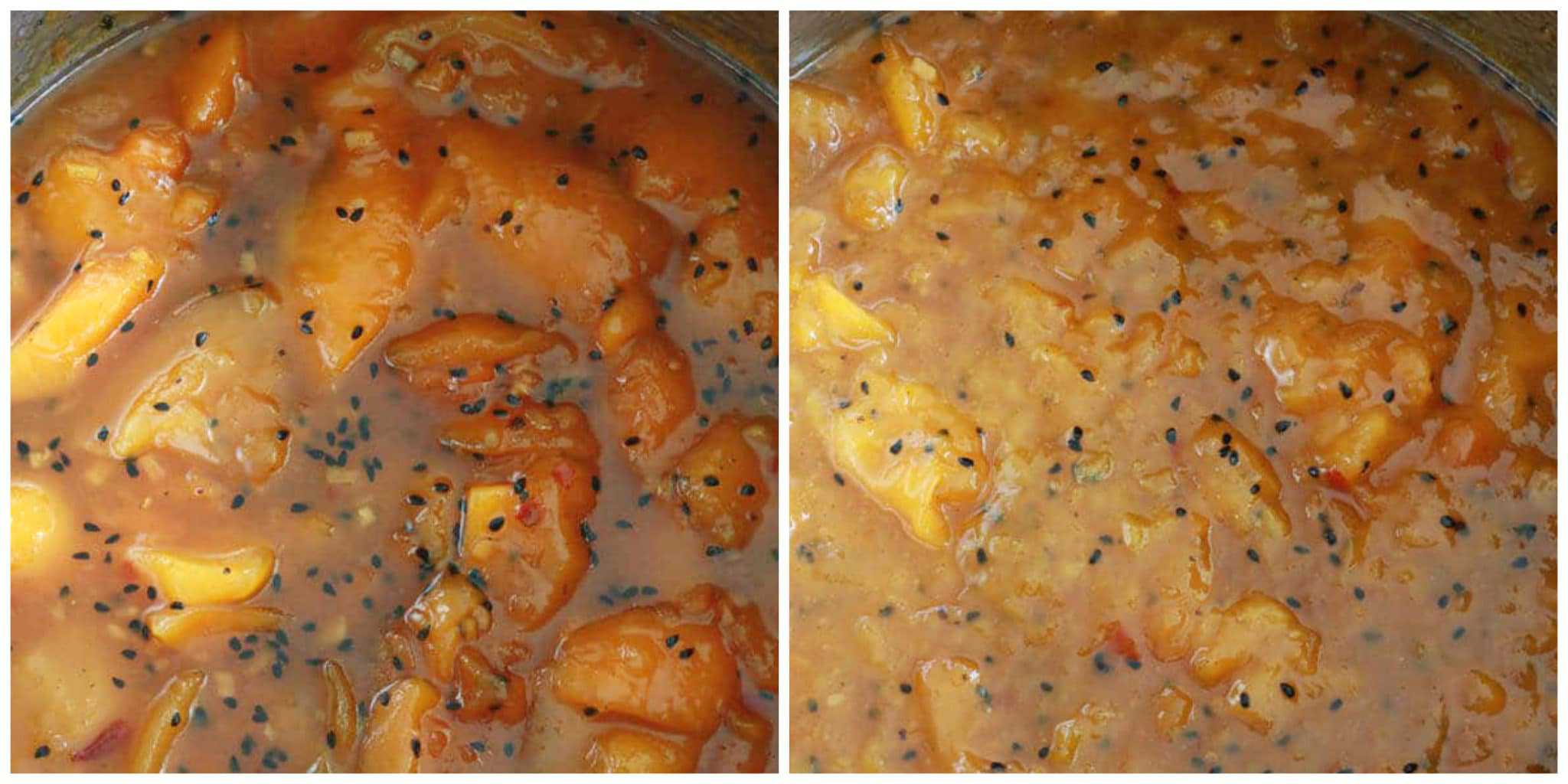
For long-term storage you can also can this mango chutney. I always make a double batch of this and can it so we can enjoy it all year long.
Canning Instructions:
Pour the mixture directly into sterilized jars and process in a water bath for 10 minutes. Let sit undisturbed for 24 hours then store jars in a dark, cool place. Will keep for at least a year.
Enjoy!
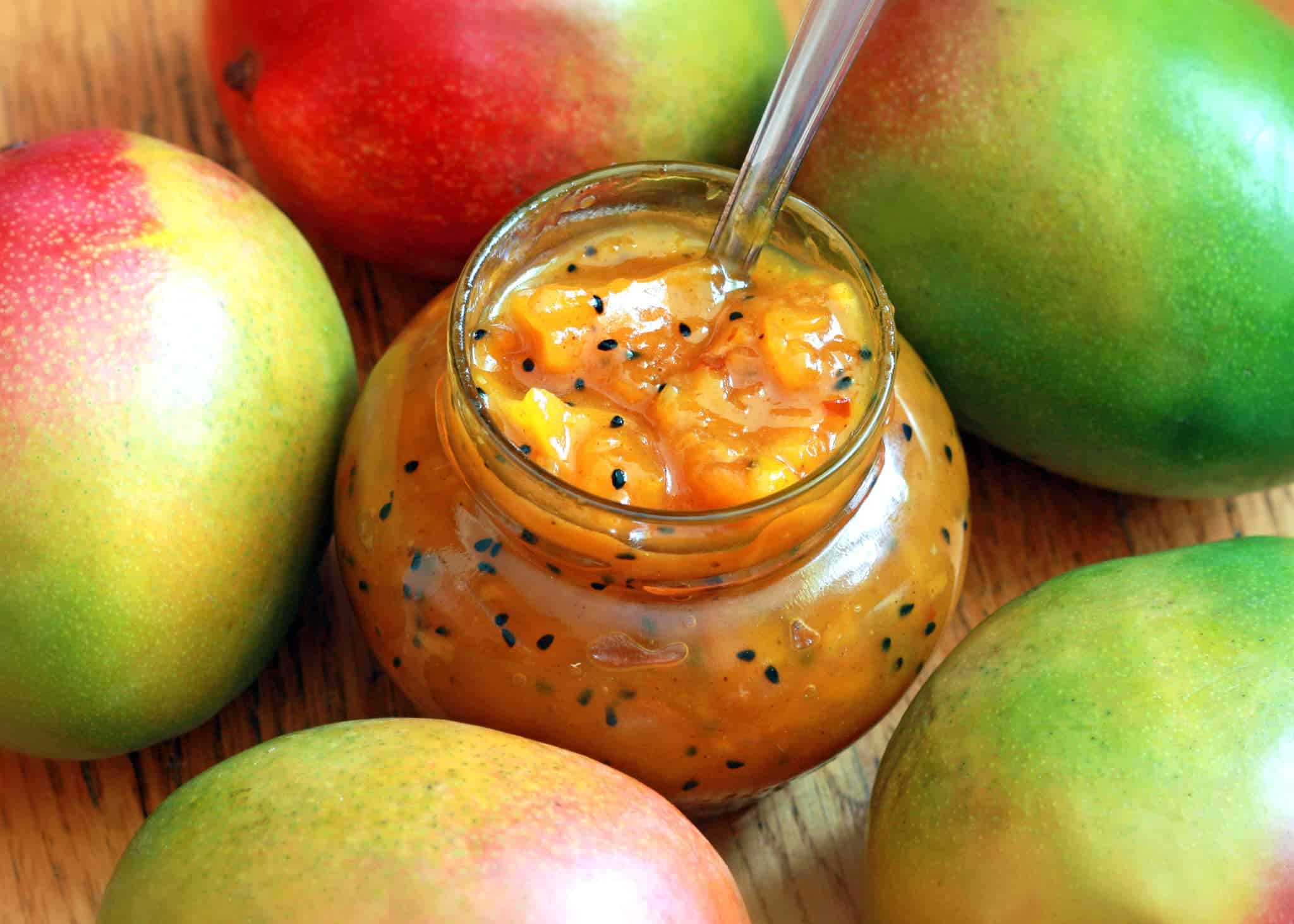
For more delicious Indian recipes be sure to try my:
- Chicken Tikka Masala
- Butter Chicken
- Chana Masala
- Tandoori Chicken
- Masoor Dal
- Shrimp Curry
- Egg Curry
- Dal Palak
- Dosa
- Chicken Biryani
- Chicken Xacuti
- Curry Powder
- Garam Masala
Save This Recipe
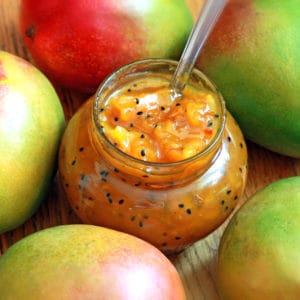
BEST Mango Chutney
Equipment
Ingredients
- 1 tablespoon cooking oil (neutral tasting)
- 2 teaspoons fresh ginger , finely minced
- 2 cloves garlic , finely minced
- 1 red chili , sliced (optional: remove seeds and membrane for less heat)
- 2 teaspoons whole nigella seeds (optional but HIGHLY recommended for incredible flavor)
- 1 teaspoon ground coriander
- 1/2 teaspoon ground cumin
- 1/4 teaspoon turmeric
- 1/4 teaspoon ground cardamom
- 1/4 teaspoon ground cloves
- 1/4 teaspoon ground cinnamon
- 1/4 teaspoon salt
- 5 large mangoes (about 300 grams each), peeled and diced; can substitute around 1500 grams frozen mango
- 2 cups white granulated sugar
- 1 cup white vinegar
Instructions
- Heat the oil over medium-high in a medium stock pot. Saute the ginger, garlic and red chilies for a minute. Add the spices and saute for another minute. Add the diced mangoes, sugar, salt, and vinegar and stir to combine. Bring it to a rapid boil and reduce to medium-low. Steady simmer for 1 hour. Remove from heat and allow it to cool. If you prefer smaller chunks, use a potato masher to mash the mixture to the desired consistency.
- For storage, chutney will keep for a while because of the high acidity content. A conservative time frame would be up to 2 months in the fridge (in a sealed jar) or for several months in the freezer. For best results let the chutney sit for a few days before using to allow the flavors to develop and mellow. Canning Instructions (for even longer shelf-life): Pour the hot mixture directly into sterilized jars and process in a water bath for 10 minutes. Let sit undisturbed for 24 hours, then store in a dark, cool place. Will keep for at least a year.This makes roughly 2 1/2 pints of mango chutney.
Nutrition
Originally published on The Daring Gourmet March 9, 2013



















Hi – just thought you would like to know I have used your recipe as the basis for an Indian-style plum chutney. I love very spicy chutneys, so couldn’t find a recipe for plum chutney that really suited me, but thought, that as plums are sweet and perfumed, a little like mangoes, it might work to use a mango chutney recipe. I tried it, and it worked – we have lots of delicious Plumgo Chutney… Thanks so much for your very helpful instructions and fab recipe.
Excellent, I’m so glad it worked out and that you’re happy with the results! Plum chutney sounds marvelous. Thanks for your feedback! Best, Kimberly
Definitely a Moghal era creation.This marvelous chutney contain all the ingredients to fully activate every taste bud of the mouth.
For sure, AayArj, we love it!
This looks like a wonderful recipe for mango chutney…lots of spices :) I just love chutneys and Indian food! Just came across your blog yesterday and am loving your recipes, looking forward to following your posts.
Thanks so much, Nerissa! I’m thrilled you found my blog – welcome aboard!
Great recipe! Thanks! Indian Mango Chutney http://t.co/jjURtmUypA
Thank you, Kirsten!
I’m new here. Will be making your mango chutney tomorrow…..I can taste it already, thanks for posting
Thank you, Joyce, and welcome! I’m happy you’re making this recipe! When I make it I’ll sometimes divide the recipe between two pots so I can make one with the nigella seeds and one without (for the few items that are strictly sweet-based). I love adding this chutney to curries – its adds such a wonderful flavor to the finished dish! I hope you like it!
P.S. Someone just left a comment a few days ago about preferring to use less vinegar. The vinegar level of this recipe is comparable to the Indian chutneys I used when I lived in the UK and it’s the standard amount that’s typically used for mango chutney. Still, the amount of vinegar can be tweaked to whatever your personal preference is. Let me know your thoughts once you’ve tried it!
Nice recipe…I’ve choosen this one out of many others to make tomorrow. Tks for putting it up here. Joyce Merne. Ireland
How many regular sized jam/chutney jars does this make?
Hello! This recipe yields approximately 5 one-pint jars of chutney.
Hello, I just made a mango chutney based on your recipe. I modified a bit though cause i didn’t dare to put so much vinegar in. Still it is too much for me, but as I read other descriptions and recipes i think this is quite normal. Put them in sterilized jars, and I hope to try them soon :)
Mine doesn’t looks more greenish…
thanks for the recipe :)
Welcome back, Eva! So happy you made this! Yes, mango chutney usually has quite a lot of vinegar in it. It tempers the sweetness, adds flavor, and it raises the acid level of the chutney so that it can be safely canned for long-term storage. Mangoes are naturally low in acid and so in canning it’s all about getting the pH level right so that botulism can’t form. Vinegar and sugar are both used in combination to achieve that. That said…being from Europe myself, I’m well aware that attitudes towards canning are quite different there than they are here in the U.S. In Europe (and generations ago here) people can freely without using lots of vinegar and sugar and there have been very rare cases of botulism. We tend to be a little over-the-top here in the U.S. with our safety/germ-phobia standards. So, most likely, in reducing the amount of vinegar in the chutney you’ll be just fine. I confirmed this whole canning thing with a friend of mine who is a pathologist, and expert in the world of germs, and he told me that he wouldn’t hesitate to eat any canned items so long as the lids have not popped up (indicating germ growth). SO…that was a long-winded way to simply say: Thanks for making this recipe and enjoy! :) – Kimberly
and oeps I did it again :D my love is really enjoying Indian food and he bought me few mangos to do it. He said this chutney could be sold in the local Indian restaurant as this is much much better :) so thank you again :)
Fantastic, Eva, that is quite the compliment! :) Thanks so much for the feedback!
The write-up of the recipes with pictures is beautiful and tempting. I wish you would have used a different picture on the contents page because that one looked like vomitus to me and I almost looked no further.
Hi Steph, I couldn’t agree more! There’s a weird glitch in my website that causing the “Popular Posts” grid on the sidebar to pull from the step-by-step photos rather than the main photo. Haven’t figured it out yet and it’s very frustrating! Anyway, I’m glad you went ahead and clicked on the pic, vomitus and all! :)
Hi
Green,ripe or half ripe mangoes?
Hi Sash, I use ripe mangoes.